Myrtle Spurge
Information
Euphorbia myrsinites - Euphorbiaceae Family - Perennial
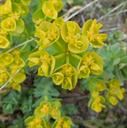
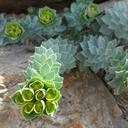
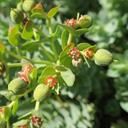
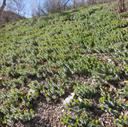
Identification
- Flowers: Inconspicuous flowers with showy yellow bracts.
- Seeds: Plants spread primarily by seed and are capable of projecting seed up to 15 feet.
- Leaves: Blue-green triangular shaped leaves with white milky latex sap.
- Flowering Time: April – June.
Warning!! All parts of myrtle spurge contain a caustic latex sap that can result in skin irritation, redness, swelling, and blisters. Caution must be taken not to get any of the sap on the skin or in the eyes. If contact does occur, rinse the area thoroughly.
Impacts
- Myrtle spurge is an escaped ornamental that quickly crowds out native plants.
- Although it is touted as deer resistant and extremely drought tolerant, it is rapidly invading our foothills and wild lands along the Wasatch Front.
- It poses a threat to children and adults who come in contact with its caustic sap.
- Myrtle spurge is a Utah State listed noxious weed and therefore is restricted for sale within the state.
Control
Most effective control methods
- Small infestations can be controlled through multiple years of digging up at least 4” of the root.
- Myrtle spurge is best controlled in the spring when the soil is moist and prior to seed production.
- Make sure to dispose of all the plant parts in the garbage instead of composting.
- For larger infestations, myrtle spurge can be effectively controlled with products containing 2, 4-D and dicamba (i.e. Weed B Gon) applied in late fall.
Control methods and timing
| March | April | May | June | July | Aug | Sept | Oct |
|---|---|---|---|---|---|---|---|
|
Mech Chem |
Mech Chem |
Mech Chem |
Mech Chem |
Mech Chem |
Prevention (Prev) Monitor and destroy new plants before seed production.
Mechanical (Mech) Hand pulling, digging, cutting, mowing and tilling.
Cultural (Cult) Biological control agents, livestock grazing, and revegetation practices.
Chemical (Chem) Selective herbicides based on the plant and the specific location. Check our weed fact sheets for specific control information.
Large Images
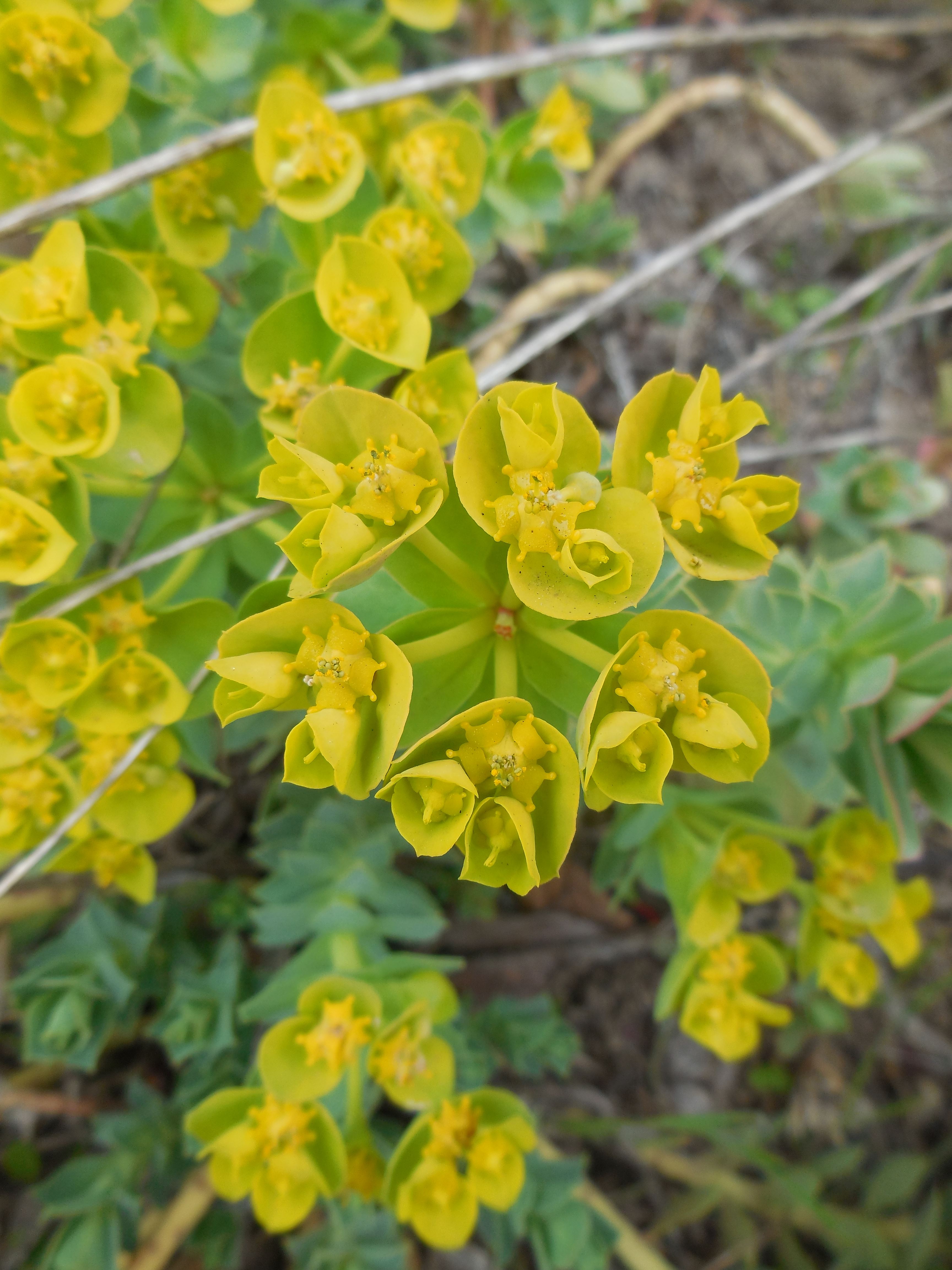
Myrtle spurge: flowers
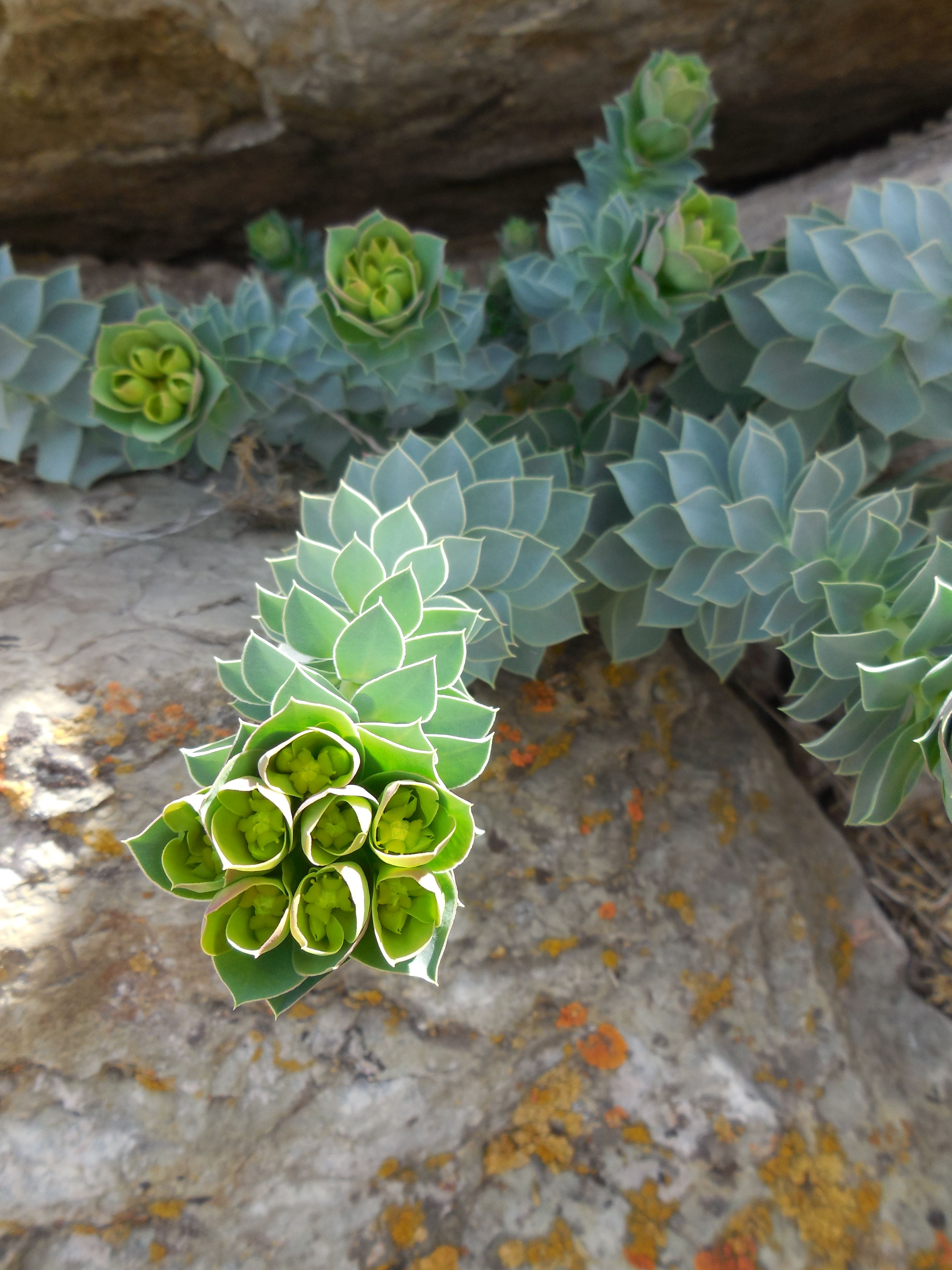
Myrtle spurge: foliage and flowers
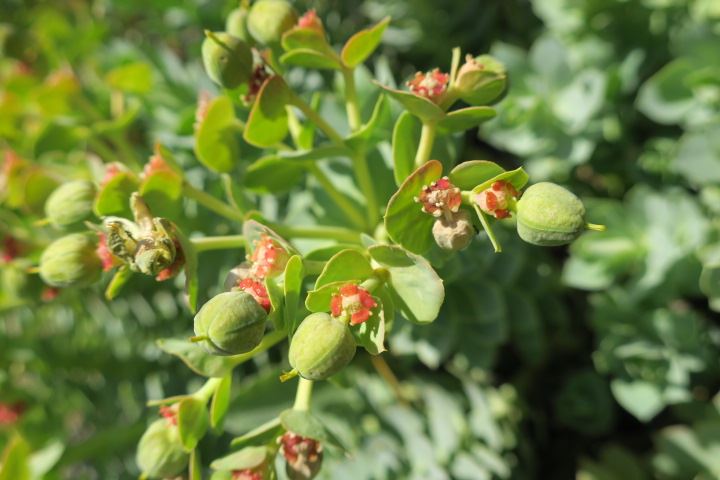
Myrtle spurge: fruit
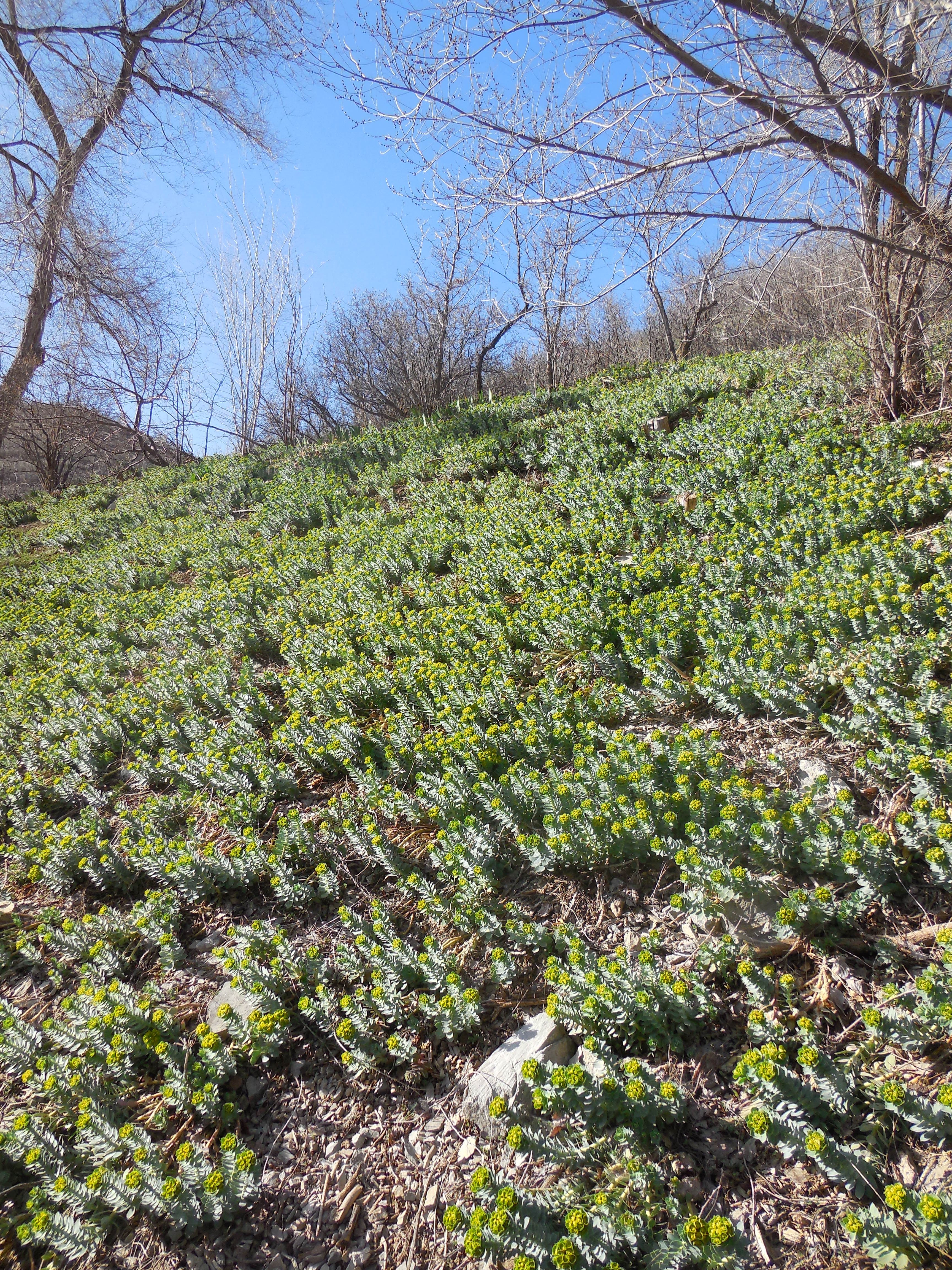
Myrtle spurge: infestation
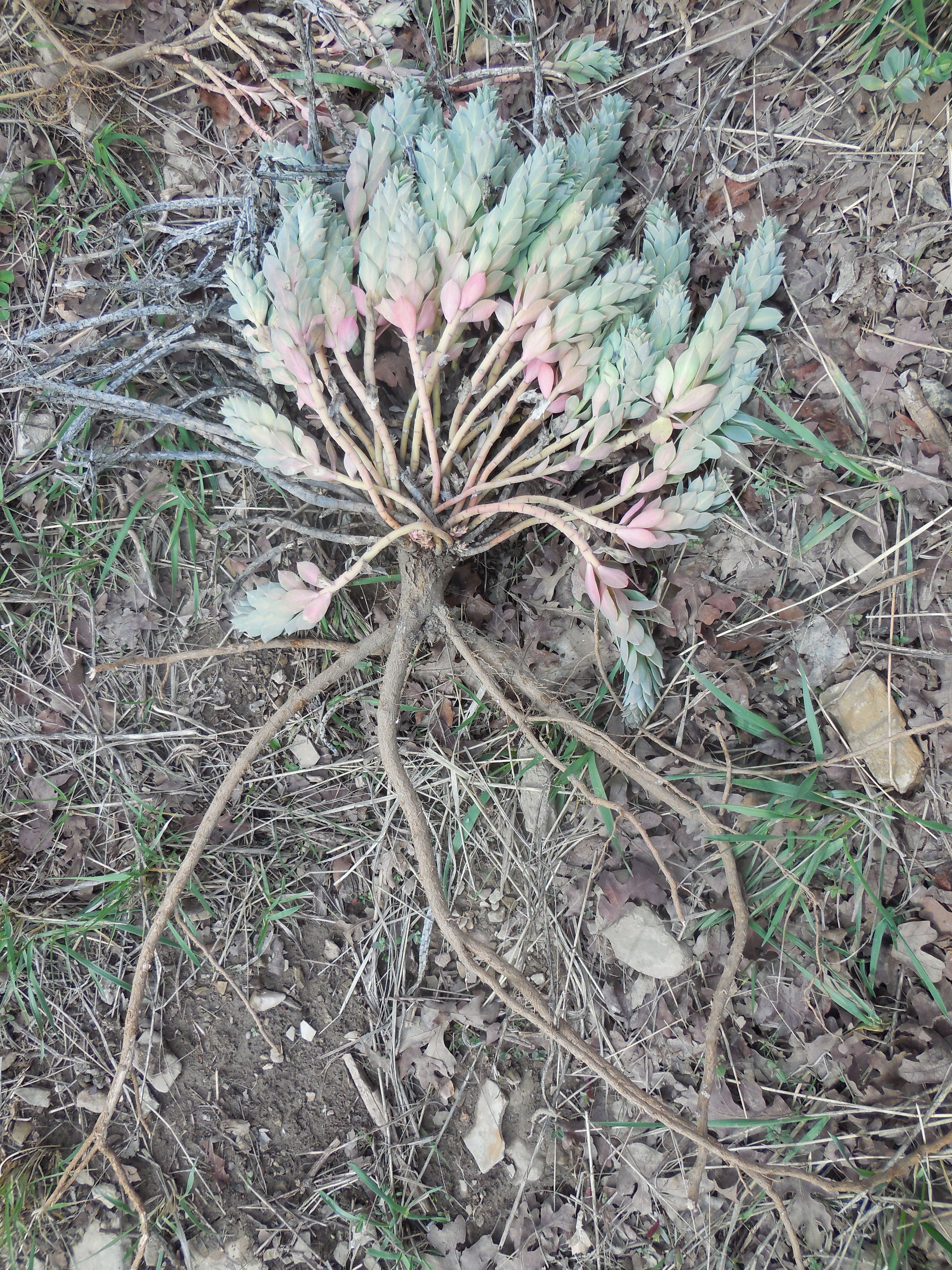
Myrtle spurge: taproot
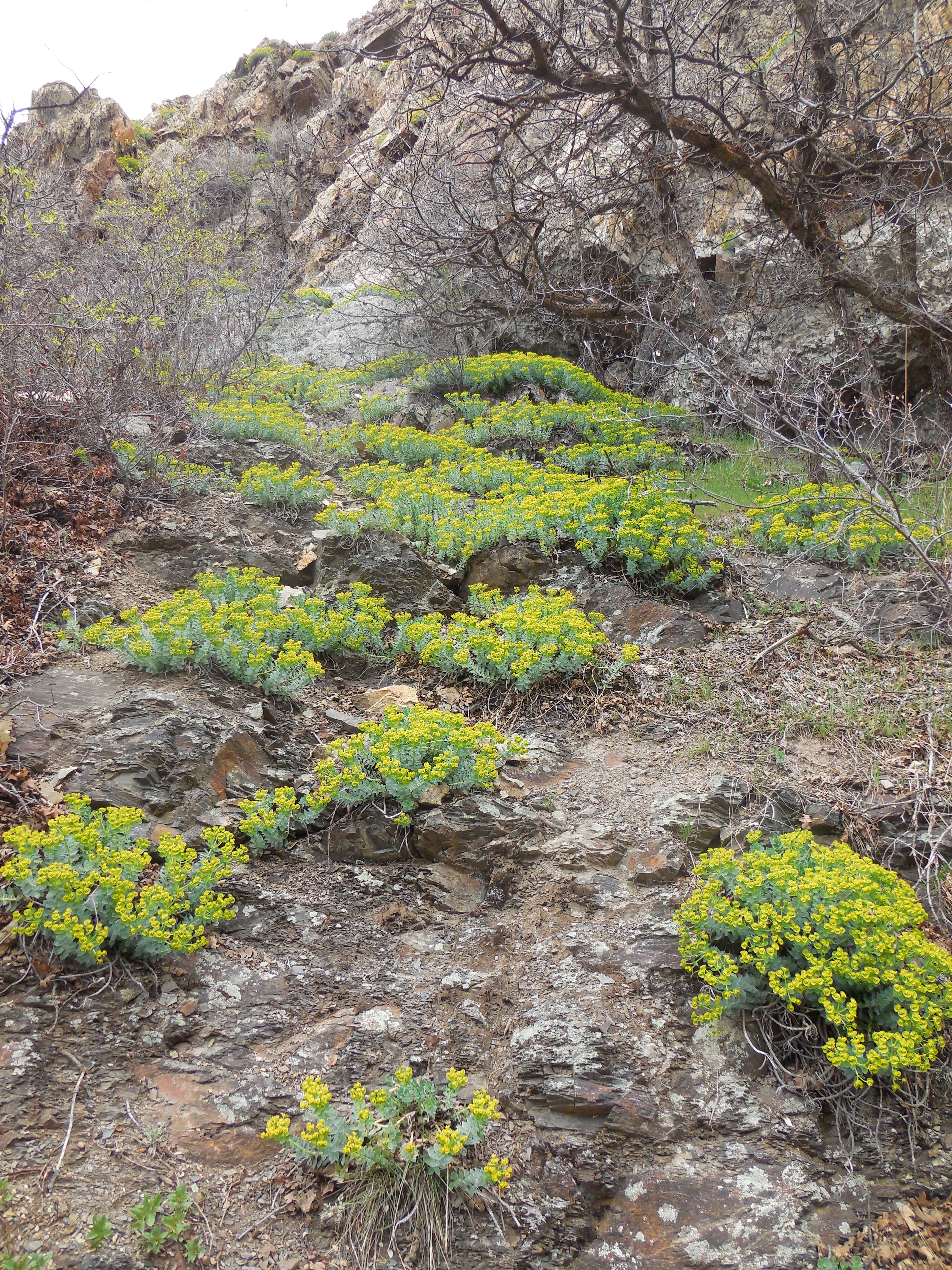
Myrtle spurge: infestation
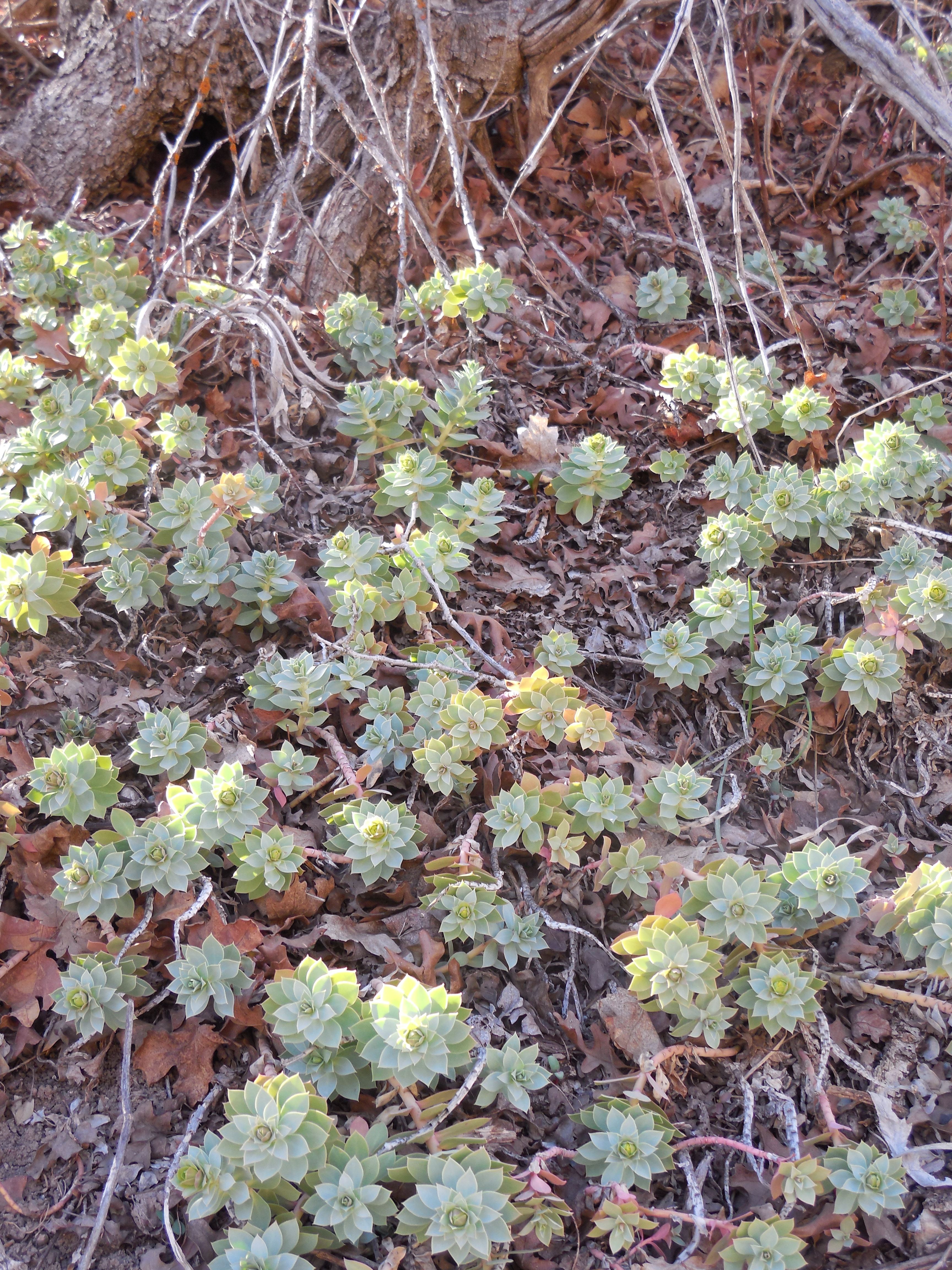
Myrtle spurge: seedlings
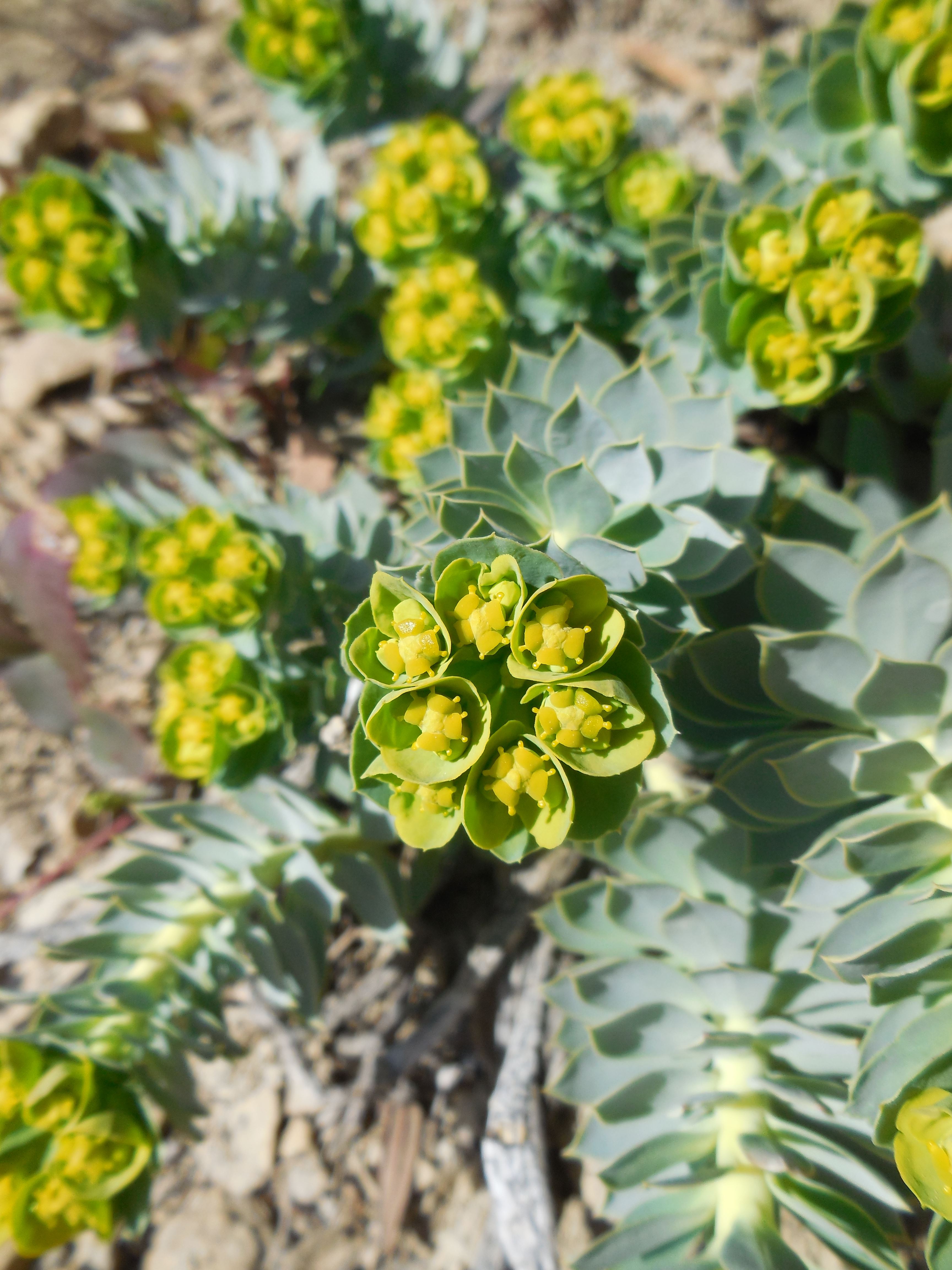
Myrtle spurge
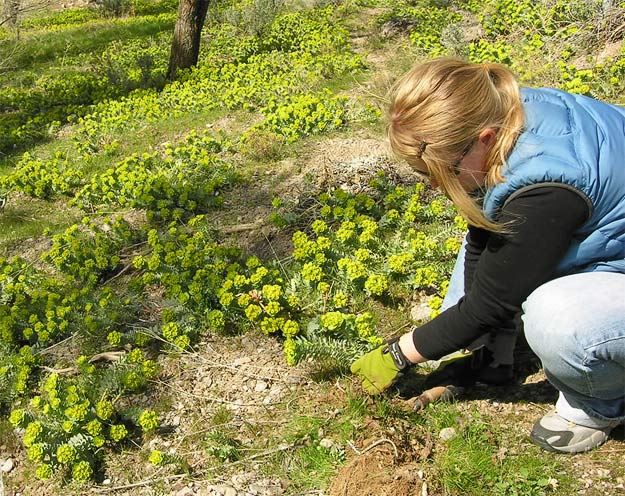
Myrtle spurge: infestation
Resources
- Myrtle Spurge Shareable Flyer
-
References
Colorado Department of Agriculture. (2015, July). Myrtle spurge identification and management. Retrieved from https://www.colorado.gov/pacific/agconservation/myrtle-spurge
Jefferson County Invasive Species Management. (2017, December). Myrtle Spurge [PDF file]. Retrieved from https://www.jeffco.us/DocumentCenter/View/1626/Information-Sheet-on-Myrtle-Spurge-PDF?bidId=View PDF
Mahr, S. (2009, May 4). Euphorbia myrsinites. Retrieved from https://wimastergardener.org/article/euphorbia-myrsinites/
Washington State Noxious Weed Control Board. (2003). Written findings of the Washington State Noxious Weed Control Board [PDF form]. Retrieved from https://www.nwcb.wa.gov/images/weeds/Euphorbia-myrsinites-2003.pdf View PDF




